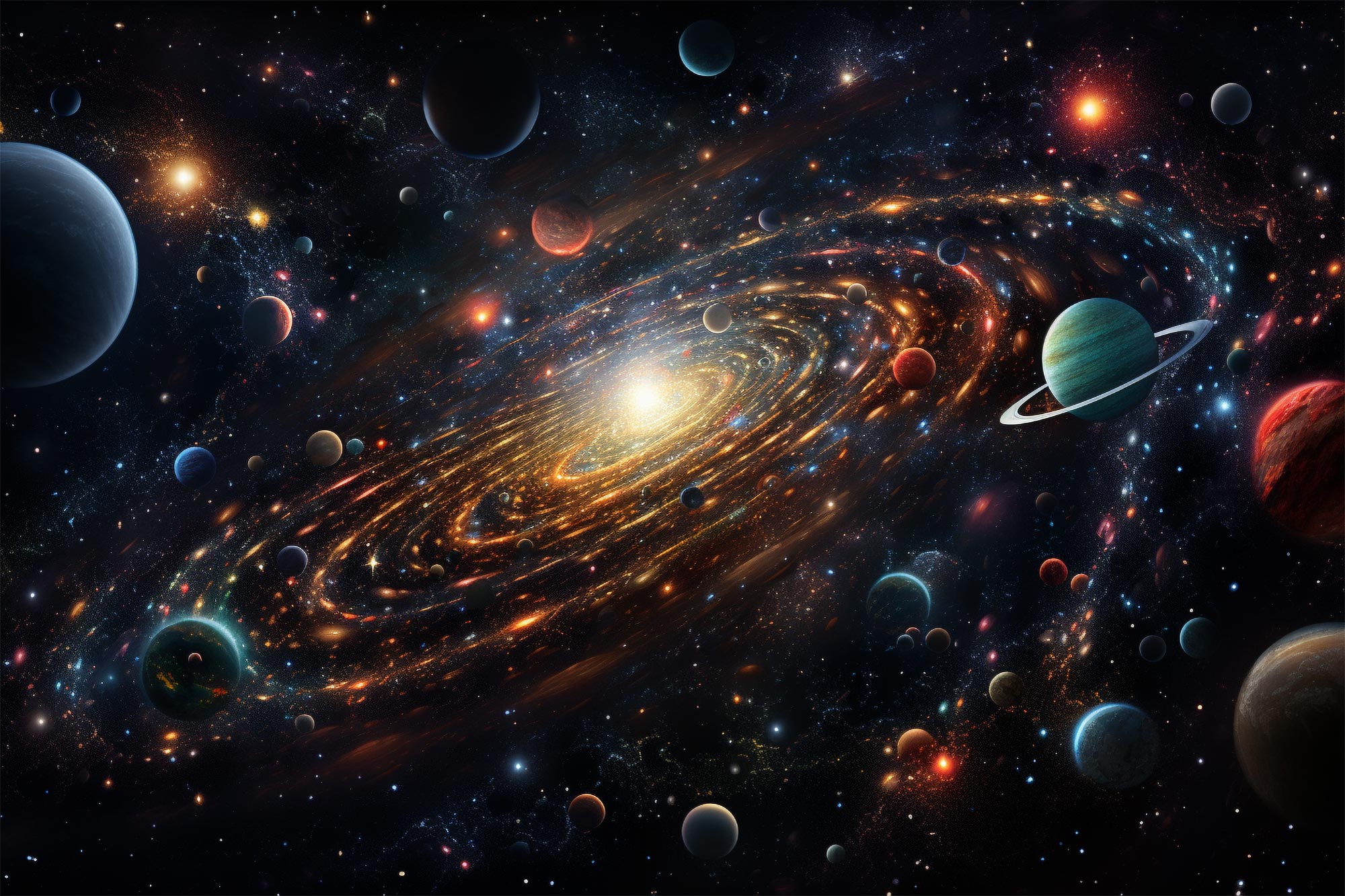
Das James Webb-Weltraumteleskop der NASA hat eine 3D-Visualisierung veröffentlicht, die fast 5.000 Galaxien zeigt, darunter die Macy-Galaxie, eine der ältesten Galaxien, die 390 Millionen Jahre nach dem Urknall entstand. Diese wichtige Beobachtung demonstriert Webbs fortschrittliche Bildgebungsfähigkeiten, die es Forschern ermöglichen, bisher ungesehene Teile des Universums zu erkunden und neue Fragen zur Sternentstehung in diesen frühen Galaxien zu stellen.
Die Daten zeigen Webbs Fähigkeit, Tausende von Galaxien gleichzeitig abzubilden und zu identifizieren.
Das Office of Public Outreach des Space Telescope Science Institute hat eine neue wissenschaftliche Visualisierung von Daten aus der CEERS-Umfrage (Cosmic Early Evolutionary Science) veröffentlicht. Das Video ist Webbs Erkundung der als Extended Groth Strip bekannten Region und enthüllt viele Galaxien, die noch nie zuvor gesehen wurden. Es zeigt eine Fülle von Galaxien im gesamten Universum und endet mit der Macy-Galaxie, die 13,4 Milliarden Lichtjahre von der Erde entfernt liegt.
Diese 3D-Visualisierung zeigt etwa 5.000 Galaxien in einem kleinen Teil der CEERS-Durchmusterung (Cosmic Evolution of Early Launch Science), bei der Daten aus einer Region gesammelt wurden, die als Extended Groth Strip bekannt ist. Wenn sich die Kamera von unserem Blickfeld entfernt, entspricht jede Sekunde im Datensatz 200 Millionen Lichtjahren, also weitere 200 Millionen Jahre in der Vergangenheit. Das Erscheinungsbild der Galaxien verändert sich, was die Tatsache widerspiegelt, dass entfernte Objekte zu früheren Zeiten im Universum gesehen wurden, als Galaxien noch weniger entwickelt waren. Das Video endet in Maisies Galaxie, die nur 390 Millionen Jahre nach dem Urknall, also vor etwa 13,4 Milliarden Jahren, entstand.
Die neue 3D-Visualisierung hebt 5.000 vom Webb-Weltraumteleskop entdeckte Galaxien hervor
Dieses Video ist eine wissenschaftliche Visualisierung der Galaxien, die im Rahmen von aufgenommen wurden CEERS Survey (Early Launch Science of Cosmic Evolution), der eine große Mission aus der Vergangenheit vorstellt[{“ attribute=““>NASA’s James Webb Space Telescope. It flies by thousands of galaxies, starting with those nearby and ending with less-developed galaxies in the very distant universe, including one never seen before Webb.
The area highlighted in this visualization is a small part of the Extended Groth Strip, a region between the Ursa Major and Boötes constellations originally observed by the Hubble Space Telescope between 2004 and 2005. While this vast region contains about 100,000 galaxies, the visualization focuses on approximately 5,000 – with the nearest and more complex galaxies, shown in the beginning, located within a few billion light-years of Earth. As the visualization proceeds, showing galaxies farther away from Earth, we see different stages of the universe’s history and evolution.

Extended Groth Strip. Credit: NASA, ESA, M. Davis (University of California, Berkeley), and A. Koekemoer (STScI)
The visualization’s farthest galaxy, known as Maisie’s Galaxy, is a target of great interest to astronomers. It formed about 390 million years after the big bang, or about 13.4 billion years ago. It’s not only one of the first bright, extremely distant galaxies found by Webb, but it’s also an example of an early galaxy that only Webb could see. This is because Webb’s instruments can capture the light from these early galaxies, which has been shifted to infrared wavelengths by the expansion of the universe.
“This observatory just opens up this entire period of time for us to study,” said Rebecca Larson of the Rochester Institute of Technology in Rochester, New York, one of the survey’s investigators. “We couldn’t study galaxies like Maisie’s before because we couldn’t see them. Now, not only are we able to find them in our images, we’re able to find out what they’re made of and if they differ from the galaxies that we see close by.”
Steven Finkelstein of the University of Texas at Austin, principal investigator of the CEERS program, continued, “This observation exceeded our expectations. The sheer number of galaxies that we’re finding in the early universe is at the upper end of all predictions.” The observatory’s ability to conduct surveys like these provides a demonstration of Webb’s instruments for astronomers to reference for future observations.
This visualization not only shows just how far Webb can observe, but also how much it builds off the accomplishments of Hubble. In many cases, Hubble’s observations, along with Webb’s data from the CEERS Survey, enabled researchers to determine which galaxies were truly far away – the early-universe galaxies of interest – and which were nearby, but so dusty that their visible light was obscured.
With these observations, the next goal for researchers is to learn about the formation of stars in these early galaxies.
“We’re used to thinking of galaxies as smoothly growing,” Finkelstein remarked. “But maybe these stars are forming like firecrackers. Are these galaxies forming more stars than expected? Are the stars they’re making more massive than we expect? These data have given us the information to ask these questions. Now, we need more data to get those answers.”
The James Webb Space Telescope is the world’s premier space science observatory. Webb is solving mysteries in our solar system, looking beyond to distant worlds around other stars, and probing the mysterious structures and origins of our universe and our place in it. Webb is an international program led by NASA with its partners, ESA (European Space Agency) and the Canadian Space Agency.

„Pop-Kulturaholic. Web-Nerd. Engagierter Social-Media-Praktiker. Reisefanatiker. Schöpfer. Food-Guru.“

/cdn.vox-cdn.com/uploads/chorus_asset/file/24924650/236780_Google_AntiTrust_Trial_Custom_Art_CVirginia__0000_4.png)




More Stories
Die Federal Aviation Administration fordert eine Untersuchung des Misserfolgs bei der Landung der Falcon-9-Rakete von SpaceX
Identische Dinosaurier-Fußabdrücke auf zwei Kontinenten entdeckt
SpaceX startet 21 Starlink-Satelliten mit einer Falcon 9-Rakete von Cape Canaveral aus – SpaceflightNow